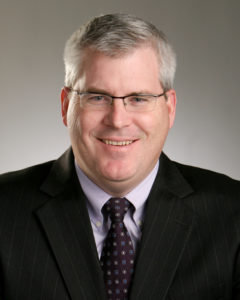 The following is an excerpt of a JHC interview with Tom Harvieux, vice president of supply chain management, Sanford Health, one of seven health systems involved in the Upper Midwest Consolidated Service Center (UMCSC) LLC. To read the full article, click here
The following is an excerpt of a JHC interview with Tom Harvieux, vice president of supply chain management, Sanford Health, one of seven health systems involved in the Upper Midwest Consolidated Service Center (UMCSC) LLC. To read the full article, click here
The Journal of Healthcare Contracting interviewed Tom Harvieux, vice president of supply chain management, Sanford Health, to learn about the coalitions’ initiatives and successes.
The Journal of Healthcare Contracting: Are you open to new members joining?
Tom Harvieux: Because we are committed that our growth will not be simply for the sake of growth, we are being deliberate in assessing potential members for cultural alignment and like-minded clinical and business objectives. Today, the UMCSC membership is comprised of Class A, B, and C members, as determined by financial obligation and ownership interest.
JHC: Have you found the coalition is providing members with more advantages than originally expected? What are these advantages?
Harvieux: Yes, we have exceeded our savings projections for the consolidated service center and moved faster with regard to physician preference items than we originally expected. We have also expanded our scope to include purchased services, thereby creating significant opportunity for our members.
JHC: What are the top three initiatives your regional purchasing coalition has pursued in the last 12 months?
Harvieux: Our top three initiatives this past year have included cardiac stents, cardiac rhythm management devices and trocars. Our group completed 22 physician preference agreements in 2010, which was a major accomplishment considering the complexity of these contracts and the number of physicians in our member organizations.
JHC: How much savings has your regional purchasing coalition realized in the last 12 months?
Harvieux: Our members realized a savings of $31,289,881, or 10.83 percent.
JHC: How has being part of a regional purchasing coalition enabled members to leverage their buying power? Is this something your members have become better and smarter at over the years?
Harvieux: Absolutely. We had initial success leveraging our purchasing power on products and contracts on which the members had alignment. Initially, smaller members of our group particularly benefited from the aggregation of volume on the aligned contracts. Demonstrating commitment and the ability to move market share have enabled the UMCSC to capitalize on leveraging its collective volume. It has been the rare occasion that every member did not achieve at least some savings, and the CSC operations committee and service provider have worked very hard to ensure no member has been upside down on a CSC agreement. Given the size of our group, it is not uncommon for a member to have existing remarkable pricing based on its local conditions.
JHC: How much savings did the coalition achieve in the first year, and how has that increased today?
Harvieux: The first year, our coalition achieved $14,610,504 in line item and rebate savings, or a 9.7 percent average member savings. Our initial efforts leaned more toward commodity and clinical products. Since then, the group has migrated more toward physician preference items due to the significant savings opportunities available.

Be the first to comment on "RPC Profile: Upper Midwest Consolidated Service Center"